
Interior
We were a little disappointed to see that NZXT has stuck to a notches and rails system of side panel attachment rather than the front hinge system that more premium cases have started to adopt which is far less fiddly. With the side panels off, you can really see how much bulk the front, roof and even the feet add to the core chassis.Inside, we find a neatly arranged dual chamber layout with the same high build quality we saw on the outside, a great paintjob and all the usual touches we'd expect like pre-installed motherboard standoffs, PCI bracket thumbscrews and all black internal cables. Nevertheless, we think it's fair to say NZXT has taken a very conservative and safe approach to retreading the mini-ITX path, using lots of space but not in an especially unique way.
There is no support for 5.25in devices (fine by us), but at the front of the motherboard tray is a pair of SSD trays, each held in place with its own thumbscrew and thus easily removable. Drives here can be shown off through the window and won't get in the way of any radiators installed in the front mounts, at least if you stick to standard SSDs. New 15mm tall PCI-E SSDs like the Intel SSD 750 may have some compatibility issues in this situation. Such drives are far from being the norm, but we'd still like to see cases start taking them into consideration, especially premium small form factor cases like this where the 2.5in version of the SSD would make more sense than the PCI-E add-in-card form factor.
The lower chamber is where you'll install your PSU, and it also acts as a great place to neatly stash excess cables. PSUs here can be as long as you like, and there are rubber feet on which they can stand. At the front, you'll find a series of rubber washers, as this area can be used to mount a 3.5in or another 2.5in drive. Still, NZXT could easily have installed a proper drive cage here, which would have allowed for at least two such mounts instead of one. Instead, there's room for another 3.5in drive on the back of the motherboard tray behind the area where the SSD trays are frontside. However, this mount does not include rubber washers and it is partially blocked by both SSD mounts, which you'll need to remove to gain access – less than ideal.
NZXT does a solid job pre-routing cables for you, but it uses temporary plastic cable ties rather than reusable Velcro ones. Even so, it's a good start and you won't have too much hassle. The LEDs and fans are all connected out of the box so you only have to hook up a single Molex connection to get going. The fans are connected to one of NZXT's PWM hubs, which can control all of your case and CPU cooler fans with the single PWM signal coming from your motherboard's CPU fan header. There are plenty of extra headers for additional fans, and it's a neat way of giving you case-wide, synchronised fan control.
The cable routing column just next to the motherboard leaves lots of room to feed through bulky power cables while shielding them from view. There are also additional holes above and below the motherboard, so the 8-pin ATX connector, rooftop fans and I/O cables can all be neatly routed as well. There's even a hole in the PSU cover so you can neatly connect the PCI-E power cables to your GPU. Unfortunately, there are no rubber grommets on any of these holes. In fairness, they're small enough that grommets aren't really needed, but we still think it would add an extra level of neatness. Lastly, the extruded side panel means you have plenty of room and won't struggle to refit the panel.
Water-cooling support is a must for a case this size, and NZXT definitely delivers here. Both the roof and the front mounting areas can house 240mm or 280mm radiators. In the roof, you're limited to slimline models only with a single row of fans, with either the radiator or the fans needing to be installed in the top section of the roof, which the curved panel gives you room enough to do. In the front, you can also move the fans to the outer part of the chassis and leave room for either a slimline radiator and a second set of fans or a thick radiator. Along with the rear 120mm mount as well, this is plenty of water-cooling potential for mini-ITX systems.

MSI MPG Velox 100R Chassis Review
October 14 2021 | 15:04

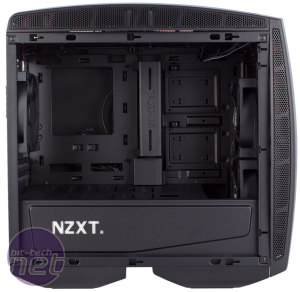
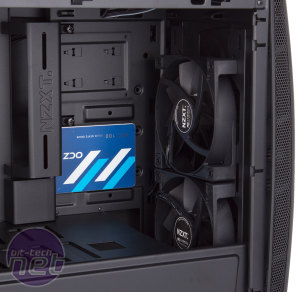
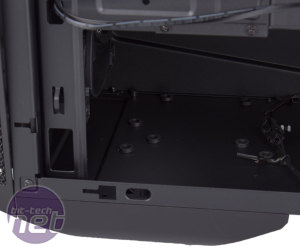

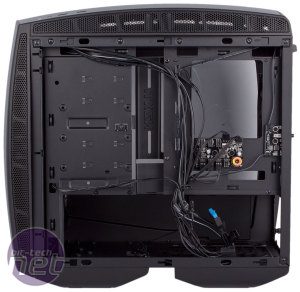
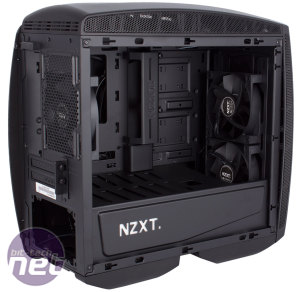
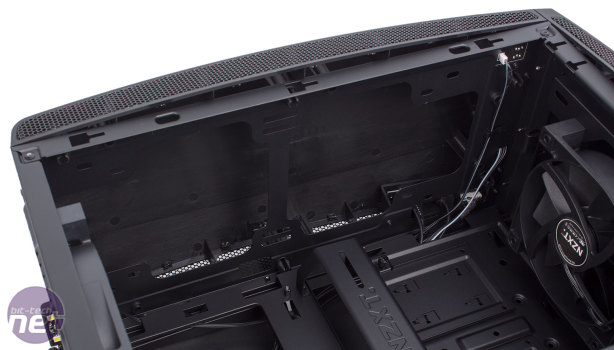







Want to comment? Please log in.